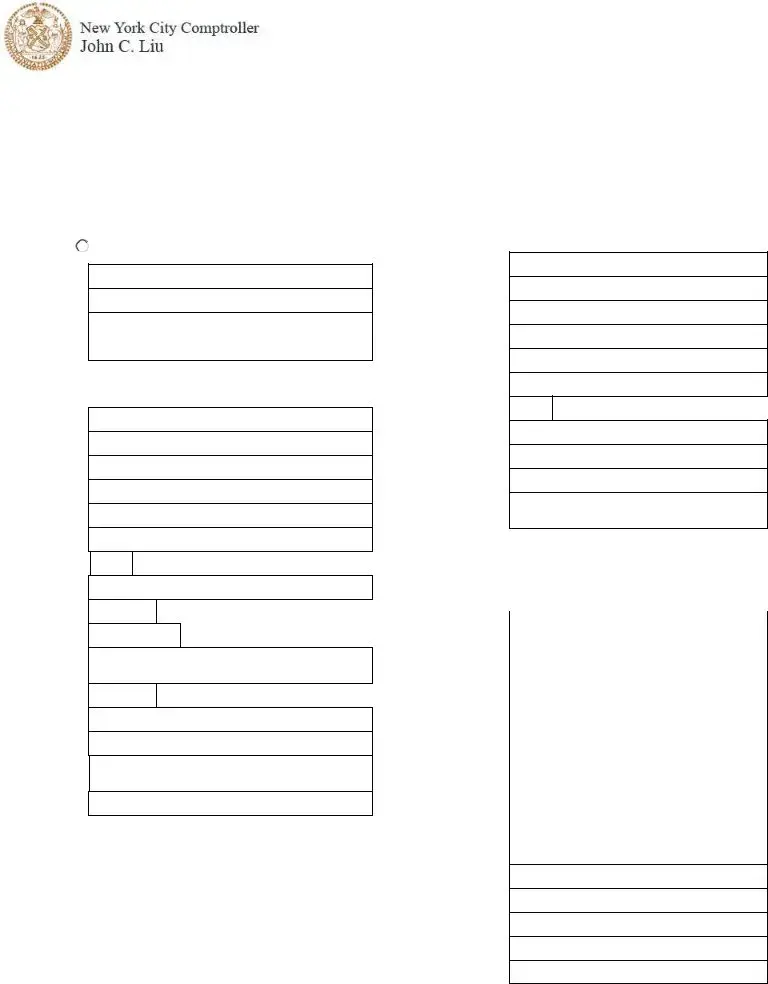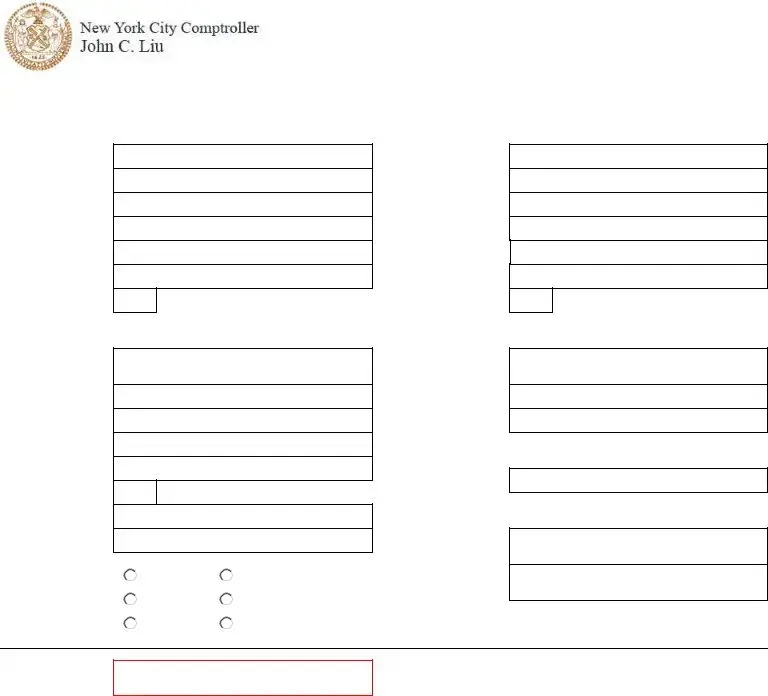In navigating the complexities of the legal landscape following personal injuries, the New York Claim form emerges as a pivotal document, particularly under the jurisdiction of the Office of the New York City Comptroller. This form, designated as NYC-COMPT-BLA-PI1-B, serves a crucial role in initiating the claim process for individuals who have encountered personal injuries within the city’s precincts. It offers a structured path for claimants to provide comprehensive details about the incident at hand, be it filed personally or on someone else’s behalf. The inclusion of sections for attorney information, when the claimant is represented, adds another layer of procedural specificity, underscoring the form’s adaptability to varying circumstances. Claimants are required to furnish details ranging from personal identification to intricate descriptions of the incident, including the time, location, and nature of the claim, alongside the injuries or damages incurred, expressed with requested dollar amounts for clarity and precision. Detailed medical, employment, and witness information sections ensure a thorough conveyance of the event’s impact and the resultant losses, further supported by sections dedicated to insurance and involved vehicles, highlighting the form’s encompassing nature. Moreover, the strict timeframe for filing extensions—beyond which legal rights must be pursued through litigation—emphasizes the importance of timeliness and accuracy in submission. The form concludes with a stern reminder of the legal implications of falsifying information, reflecting its gravity and the meticulous attention required for its completion. Through its comprehensive structure, the New York Claim form stands as a testament to the procedural rigor involved in claiming for personal injuries, navigating claimants through their pursuit of justice and compensation.

 On behalf of myself.
On behalf of myself. behalf, please provide the following information.
behalf, please provide the following information. Attorney is filing.
Attorney is filing. Yes
Yes  No
No  NA
NA Male
Male  Female
Female  Other
Other


